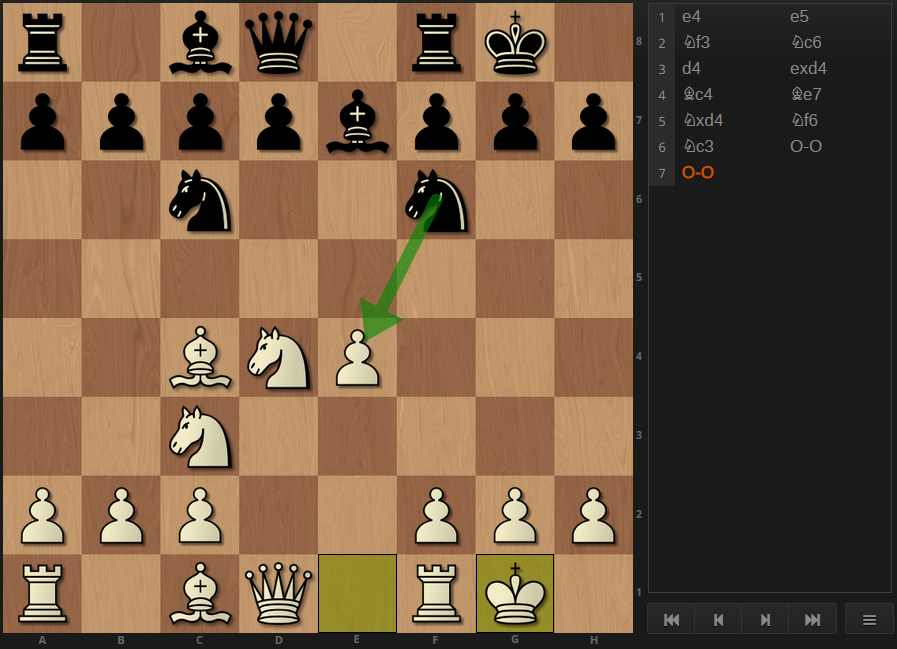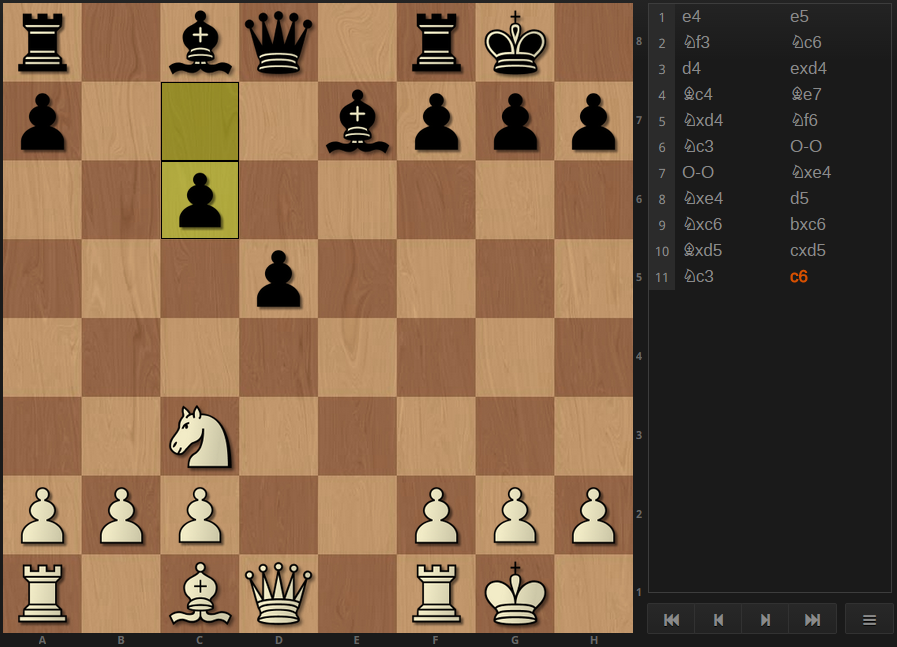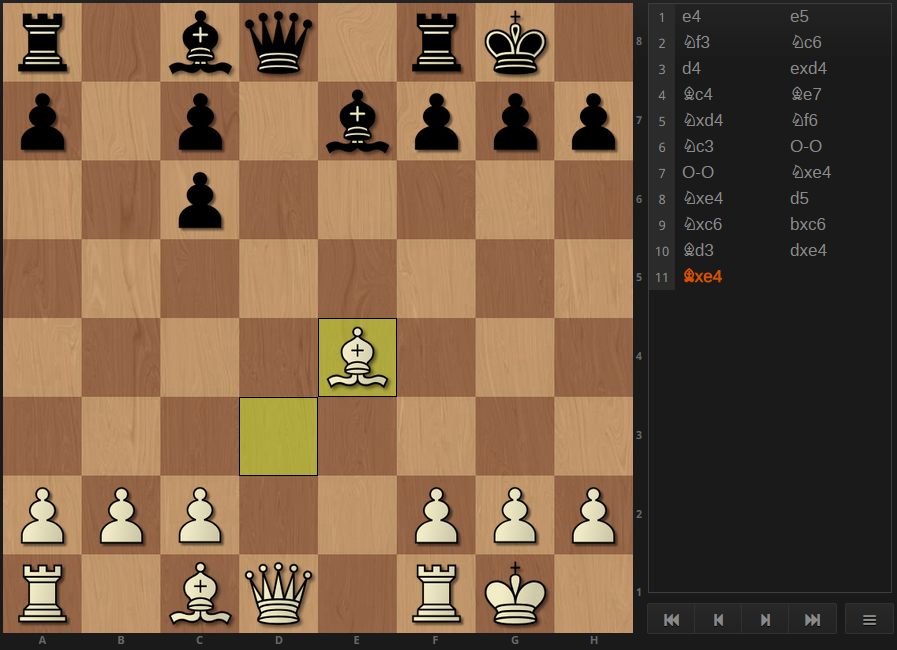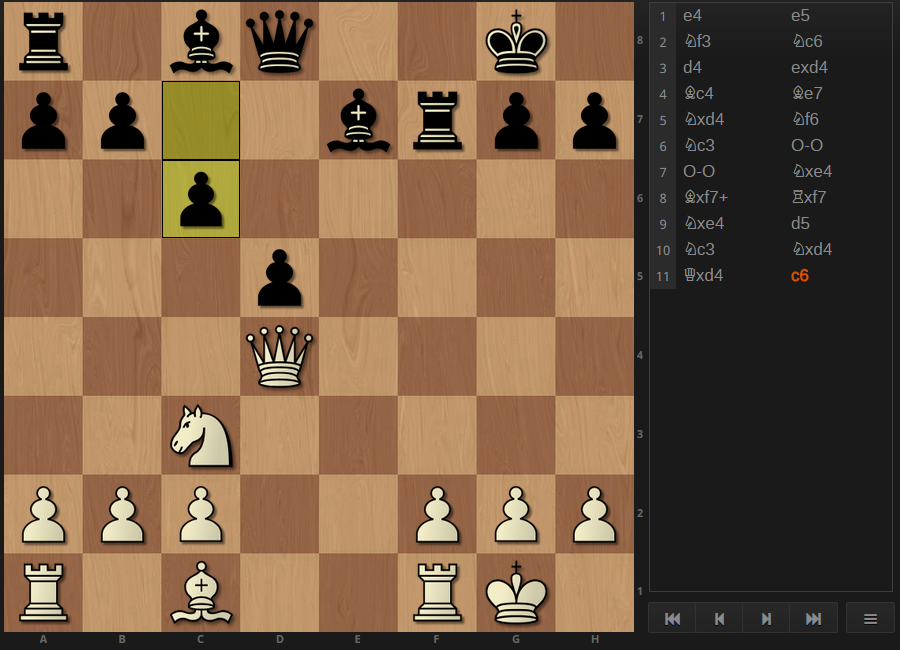Note: This article was originally published on April 13th, 2015 on chess.com
One of the most critical skills a chess player can have is actually a combination of three other skills. Let's look at a practical example to demonstrate the concept:

This game of mine played at the 2015 Arkansas Open featured a Scotch Gambit (declined). On the seventh move, white allowed a common tactical idea, the "center fork trick." If black captures on e4, white's knight and bishop can be forked with d5 after the recapture. One question we could ask about this position is "should black play Nxe4?" However, let's look at this from white's perspective by asking two related questions:
1) Should white have allowed this?
2) If white just missed the idea and black plays it, how should white respond?
Our "most critical chess skill" must be put to use here. First, we have to calculate white's possible responses to Nxe4. In this example, there are three main options which preserve material equality (black captures a pawn with Nxe4 so white must regain a pawn to stay even materially). If you want to play along, try to figure out three separate main ideas that do this.
Once, we have discovered our options, the second critical skill must be utilized. The lines must be played out mentally to "quiessence" and the ending position visualized.
Finally, the ending positions of each of these lines must be evaluated positionally and compared to each other. The line that leads to the best position for white would then be played. Or, if possible, if the best option for white is worse than other options available, white should not allow the tactic.
So, let's look at the result:
A 7...Nxe4 8.Nxe4 d5 9.Nxc6 bxc6 10.Bxd5 cxd5 11.Nc3 c6
B 7...Nxe4 8.Nxe4 d5 9.Nxc6 bxc6 10.Bd3 dxe4 11.Bxe4
C 7...Nxe4 8.Bxf7+ Rxf7 9.Nxe4 d5 10.Nc3 Nxd4 11.Qxd4 c6
These were the three main lines to be calculated. Is one of them clearly better than the other two? One clearly worse? Is the best one good for white or black? Why? Let's look at the positions.
Position after A

White has a slightly better pawn structure, but black has a better center and the bishop pair.
Position after B

Black's structure is critically weak. The position is otherwise even.
Position after C

Black has a slightly better center, two bishops, and a rook activated by the half-open f-file. White has a slightly safer king and a slightly awkward knight on c3.
In my opinion, the ranking of these three positions for white would be B, A, C. In fact, white would probably be pretty happy to have the position after line B.
In order to make the correct decision in a game situation, all of this must be done mentally while looking at the first position (or after Nxe4 has been played, depending on the situation). To review, this requires three separate skills used in succession:
1) Calculate the possible responses. Here, we calculated three lines that retained material equality.
2) Visualize the resulting positions accurately.
3) Positionally evaluate each position and compare the evaluations.
If you had trouble with this procedure, hopefully this exercise helped diagnose the problem. Improving in these areas should help your chess skill immensely. Be on the look out for errors in this type of procedure in your games to monitor your progress.

Nice little article. I enjoyed it. Have you moved this blog somewhere else?
ReplyDeleteSame here!
ReplyDelete